Doors are everywhere, a constant presence in our daily lives. We rely on them for far more than just entry and exit – doors provide security, privacy, and even contribute to the aesthetic appeal of our homes and businesses. But with so many different types of doors available, how do you choose the right one for your needs?
This guide will delve into the various types of doors, highlighting their unique features and benefits. Understanding the differences between residential and commercial doors, as well as the nuances within each category, is crucial for making an informed decision. Whether you’re looking for a striking front entryway, a secure back door, or a functional interior door, this exploration of door types will equip you with the knowledge you need to make the perfect choice. Let’s begin with a closer look at residential door types
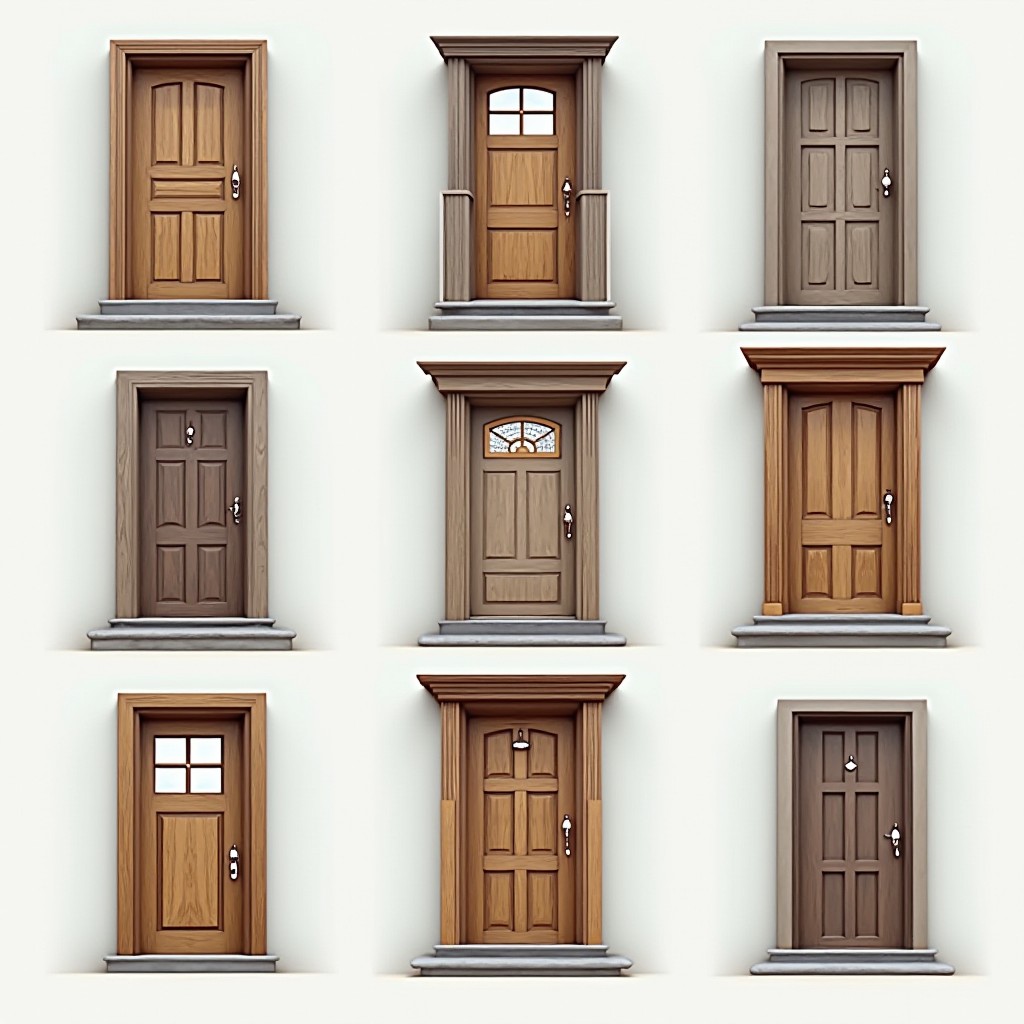
Residential Doors: Types and door designs
Residential doors are the gateways within and around our homes. They serve the essential purpose of separating interior spaces and providing privacy and noise reduction. Beyond functionality, they also contribute significantly to a home’s overall aesthetic. Let’s delve into the two main categories of residential doors: interior and exterior.
Interior vs. Exterior Doors: Defining Boundaries and Protecting Your Home
As we’ve discussed, interior doors play a key role within the home, separating rooms, enhancing privacy, minimizing noise transfer, and contributing to your interior design. Exterior doors, on the other hand, serve as the primary barrier against unauthorized access, providing security and protection from the elements. Let’s explore the various types of both interior and exterior doors.
Sliding doors: Space-Saving Elegance

Sliding doors operate horizontally along a track, opening and closing without swinging into the room. This design makes them a practical choice for spaces where maximizing floor area is a priority. Sliding doors are versatile and can be used in a variety of applications throughout the home.
One thing to think about with sliding doors: do they provide enough security?
Panel Doors: the most common type of doors
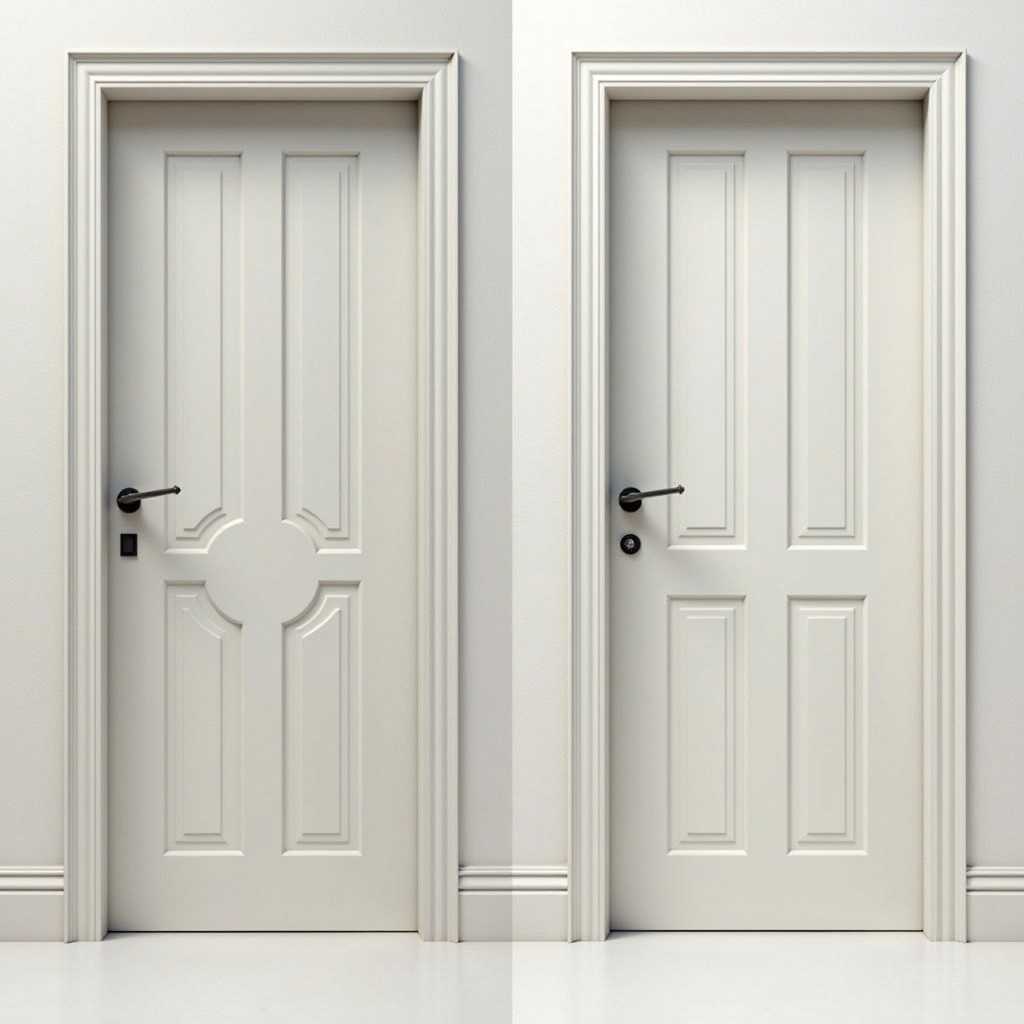
Panel doors are the traditional doors. These versatile doors, constructed with panels set within a frame, are a popular choice for both interior and exterior applications. Available in a range of materials, including wood, fiberglass, composite, MDF (Medium-Density Fiberboard), and even metal, panel doors offer a balance of functionality, security, and aesthetic appeal. They can enhance the privacy and security of your home while also adding a touch of classic style.
Both sliding and panel doors can be configured as double doors, featuring two vertical sections that meet in the middle of the door frame when closed. These double door configurations are available in both swinging (hinged) and sliding styles, offering flexibility in operation and design.
Patio Doors: Connecting Your Indoor and Outdoor Spaces
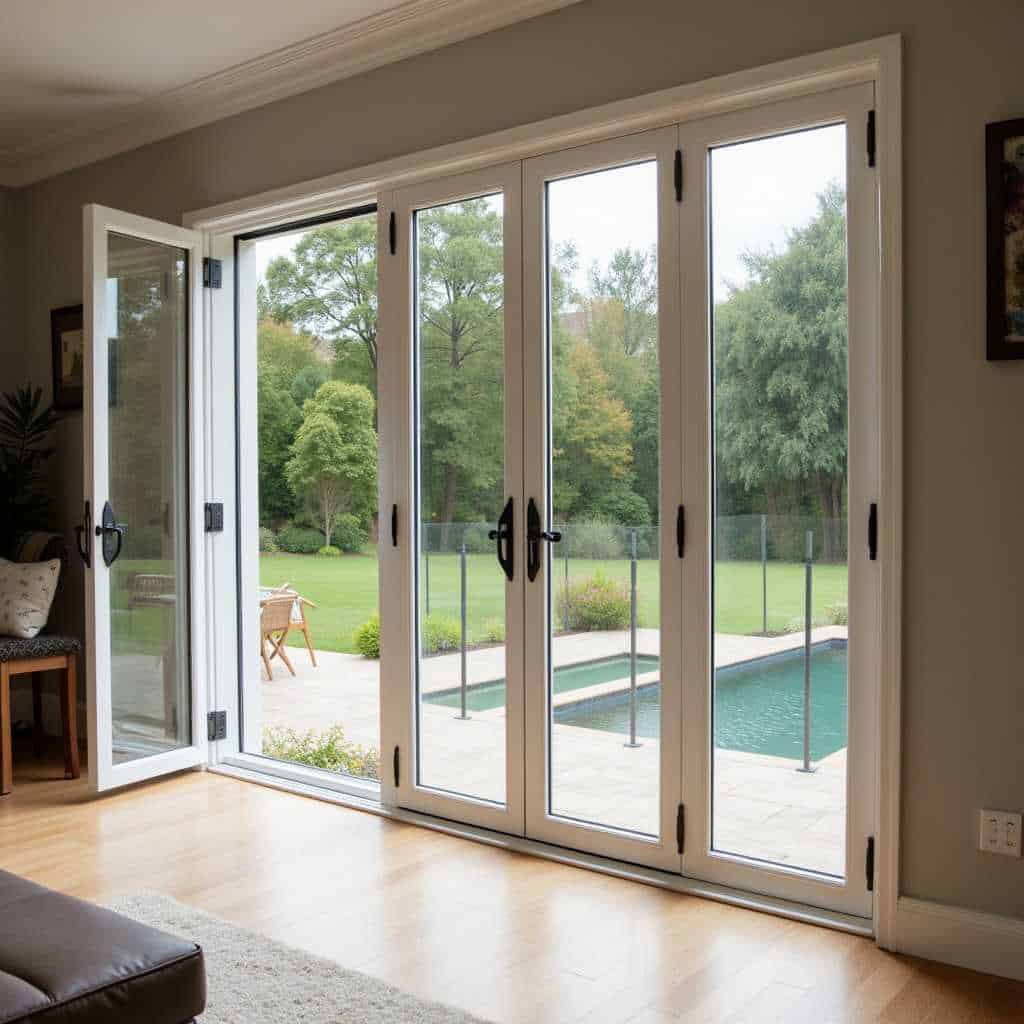
Patio doors are typically installed as entrances to patios, gardens, or balconies. They are available in a wide range of shapes, sizes, and operating mechanisms. Here are some common types of patio doors:
- Sliding Patio Doors
- French Patio Doors
- Bi-Fold Patio Doors
- Pivot Patio Doors
- Multi-Slide Patio Doors
It’s important to regularly maintain your patio doors. Because they’re exposed to the outside elements, they are more susceptible to damage.
French Doors: Classic Elegance and Natural Light
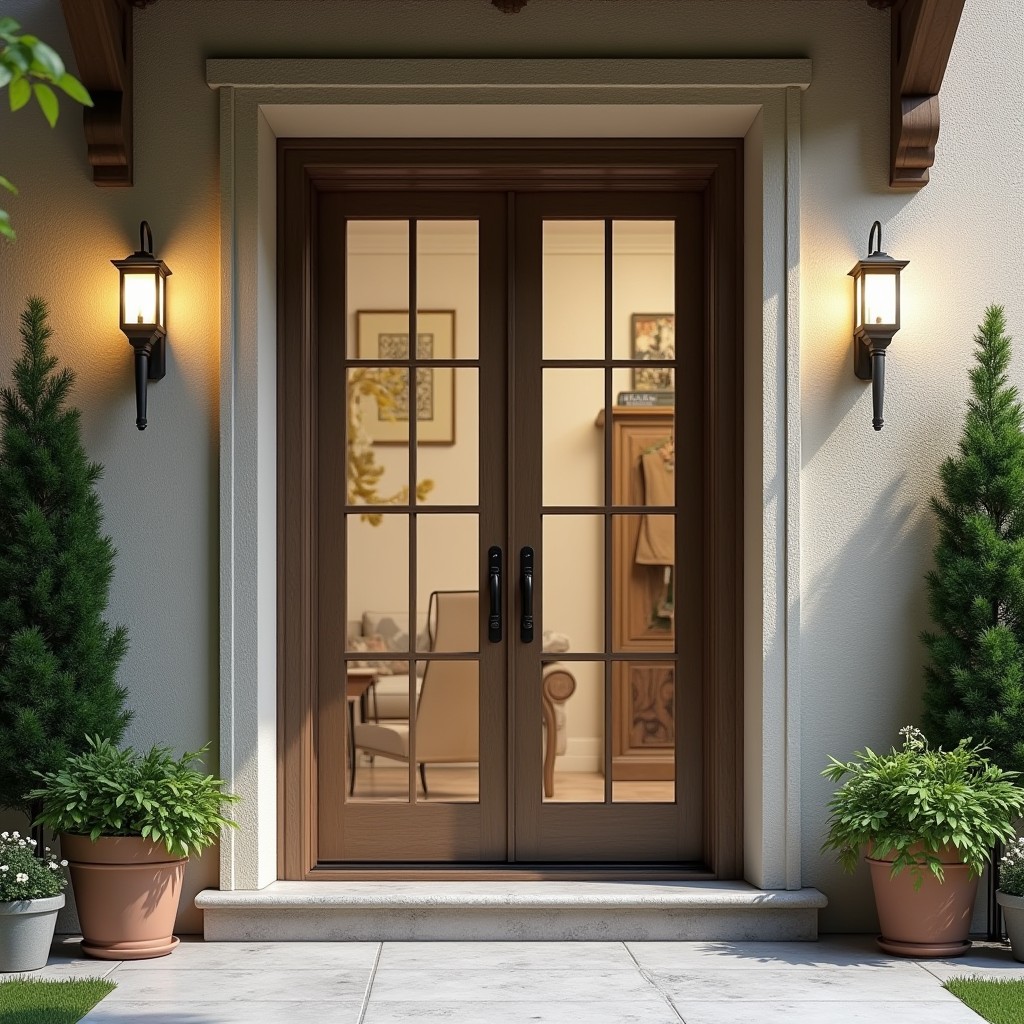
French doors, as you likely know, originated in France. Their design is quite appealing: a wood door, often with extensive glass panels. This design allows for a pleasant view of the outdoors while offering greater security than a full glass door.
Some people call it the French window because it’s a door style which looks like a big window.
Dutch Doors (Stable Doors): A Charming and Practical Choice
A Dutch door (also called a stable door or half door) is a door divided in half horizontally. You can open the top half of the door while keeping the bottom closed. This clever design makes them both charming and practical. Dutch doors may be a great option if you have little ones or pets running around and want to keep them safely contained while still enjoying some fresh air.
Flush Door: Modern and Simple
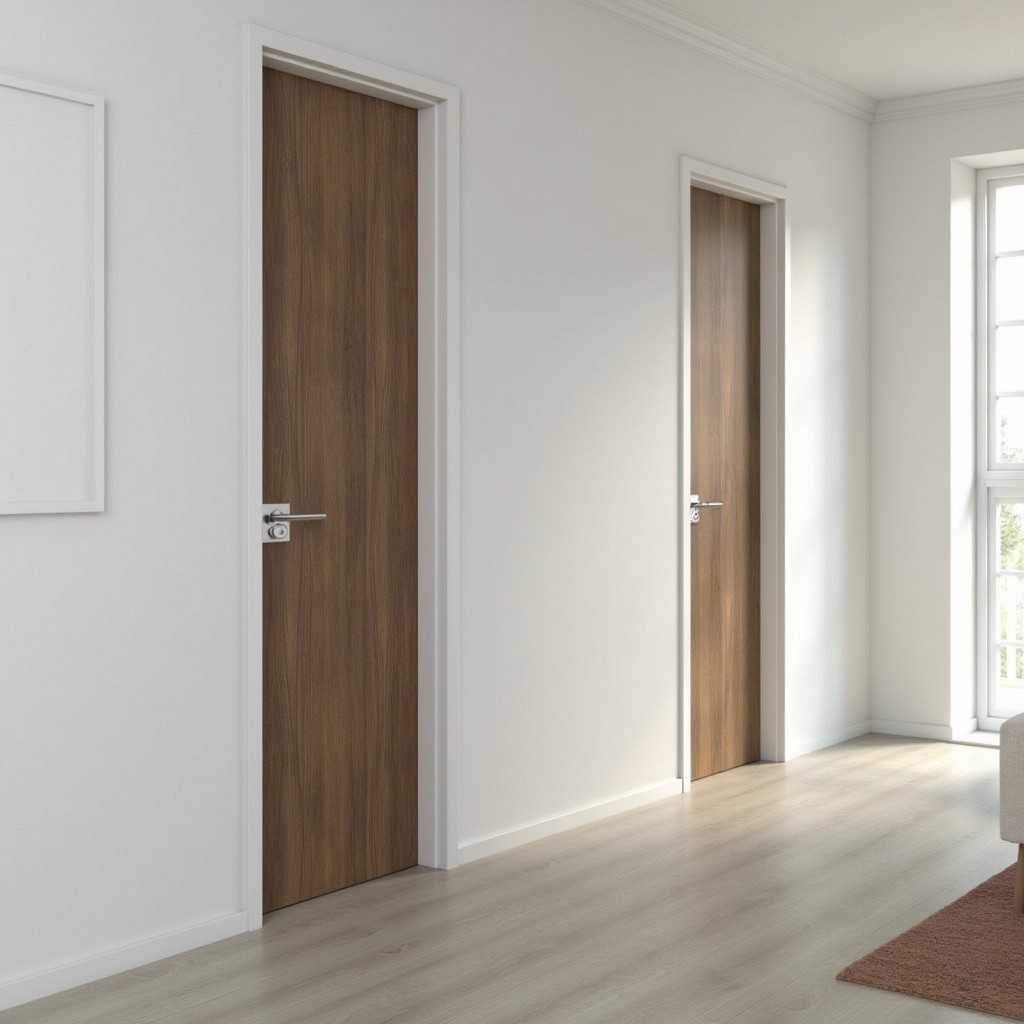
A flush door is a type of door with a completely flat and smooth surface, without any panels or decorative moldings. It is typically made by sandwiching a solid or hollow core between two sheets of plywood or MDF (medium-density fiberboard). Flush doors are known for their simplicity and clean lines, making them a popular choice for modern and minimalist interiors. They are often used for interior doors but can also be used as exterior doors when made with appropriate materials for weather resistance.
Folding Doors: Maximizing Space and Access
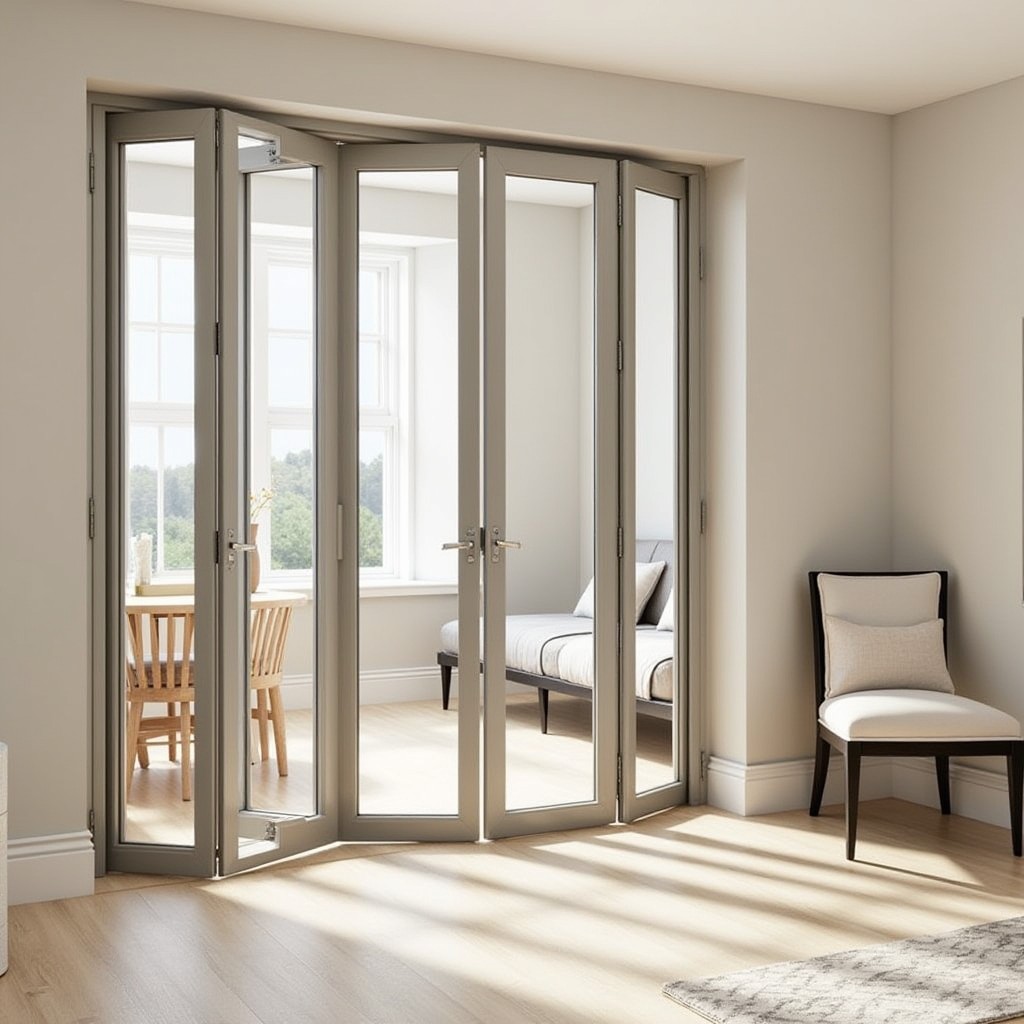
Folding doors, also known as accordion doors or bifold doors, are made of multiple connected panels that fold together when opened, much like an accordion or concertina. This design allows for a wide, unobstructed opening, making them ideal for maximizing access to a room or space.
Storm Doors: Protection and Ventilation
A storm door is like a second door you add to the outside of your main entry door. It’s great for keeping out bad weather and letting in fresh air. They’re usually made of wood, aluminum, vinyl, or fiberglass, and most have glass panels you can swap out for screens—perfect for letting the breeze in while keeping bugs out. You can find them in a few different styles: full-view (big glass panel), retractable screen (the screen rolls up), and ventilating (adjustable glass and screen).
Slab Doors: Simplicity and Customization
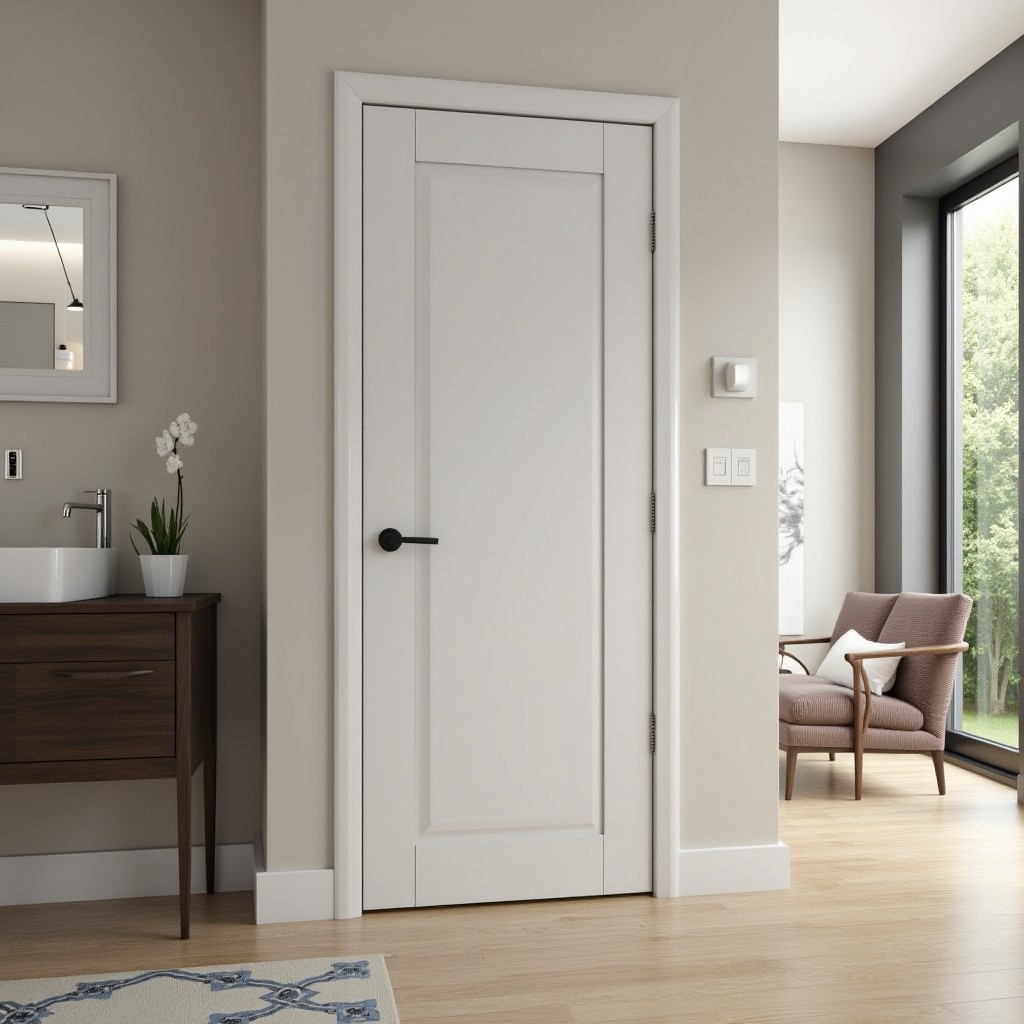
A slab door is simply the door itself, a solid piece without any pre-installed hardware, frame, or hinges. Think of it as the core component, ready for customization and installation into your existing door frame
Prehung Doors: Ready for Easy Installation
A prehung door simplifies the installation process by coming pre-assembled in its frame. This complete unit includes the door slab, the surrounding frame, and the hinges, all ready to be fitted into your doorway. Pre-drilled holes for the doorknob and lock further streamline installation, saving you valuable time and effort. This convenience makes prehung doors a popular choice for both new construction and renovations.
Cabinet Doors: What are they?
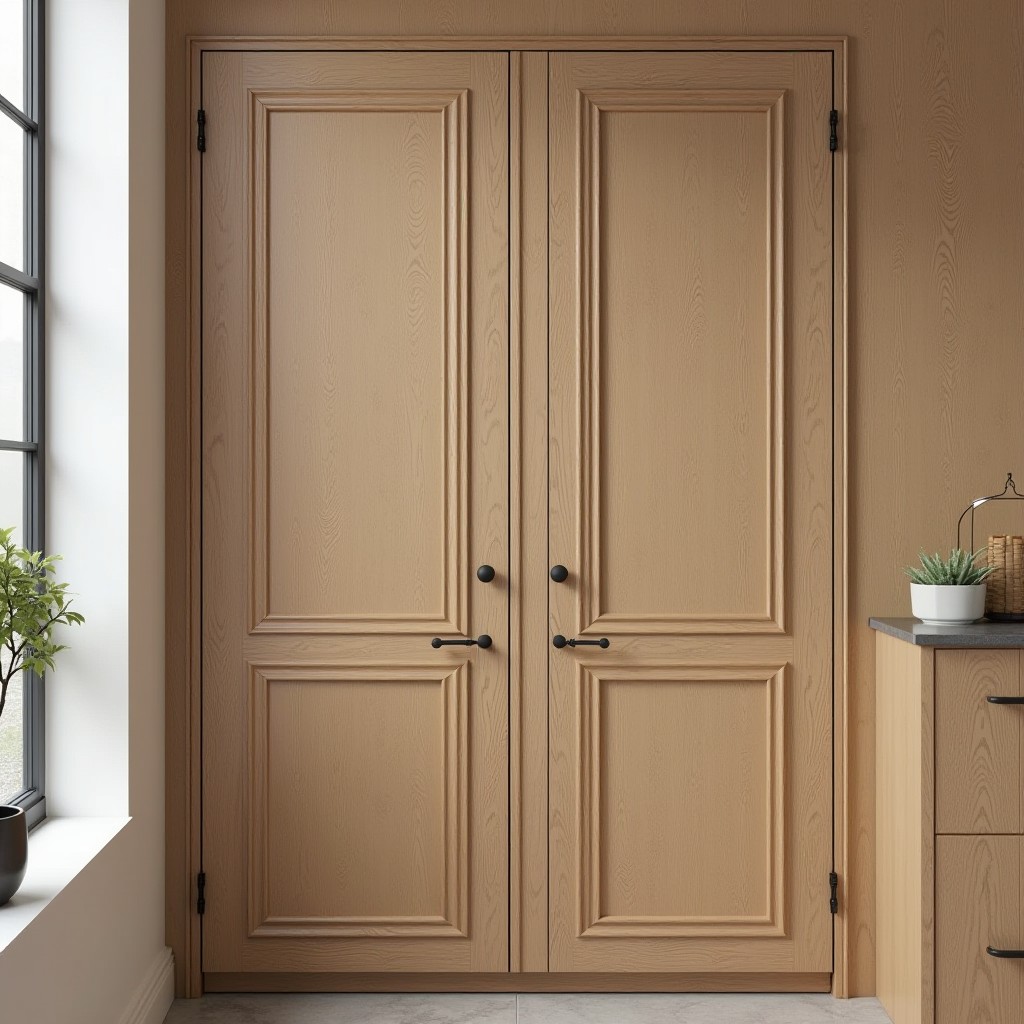
Cabinet doors are mostly wooden doors which cover your cabinets. They hide stuff and make your kitchen or bathroom look nice. They come in lots of styles and colors. They can swing open or slide, I can’t talk about cabinet doors without talking about shaker doors, as a minimalist shaker door is one of my favorite
Barn Doors: Rustic Charm and Space-Saving Design
Barn doors slide on a track along the wall, saving space and adding a touch of rustic charm to any home. They’re a popular choice for adding a unique design element to interiors, barn doors are commonly used for a rustic or industrial look.
Pocket Doors: Space-Saving Wonders
A pocket door is a sliding door that disappears into a pocket in the wall when you open it. This makes them amazing for saving space while still being functional and beautiful.
Commercial Doors: Strength and Security for Your Business
Just like any type of doors, commercial buildings have exterior and interior doors that come in different types and styles. But commercial doors are designed to be tough—they’re built strong so they’re not easily penetrated, keeping your business safe from unauthorized access.
Interior vs. Exterior Commercial Doors: Function and Security
Similar to residential doors, commercial interior and exterior doors serve distinct purposes. Interior doors are often used to divide the building’s interior space. Exterior doors, however, prioritize security. These are typically constructed from robust materials, Exterior doors can be made of metal or aluminum for enhanced protection. While some businesses opt for the aesthetic appeal of glass storefront doors, these generally require additional security measures. This could involve a secondary door or, continuous monitoring to deter unauthorized entry during closed hours, lets start to see different commercial doors types:
Hollow Metal Doors: Durable and Versatile
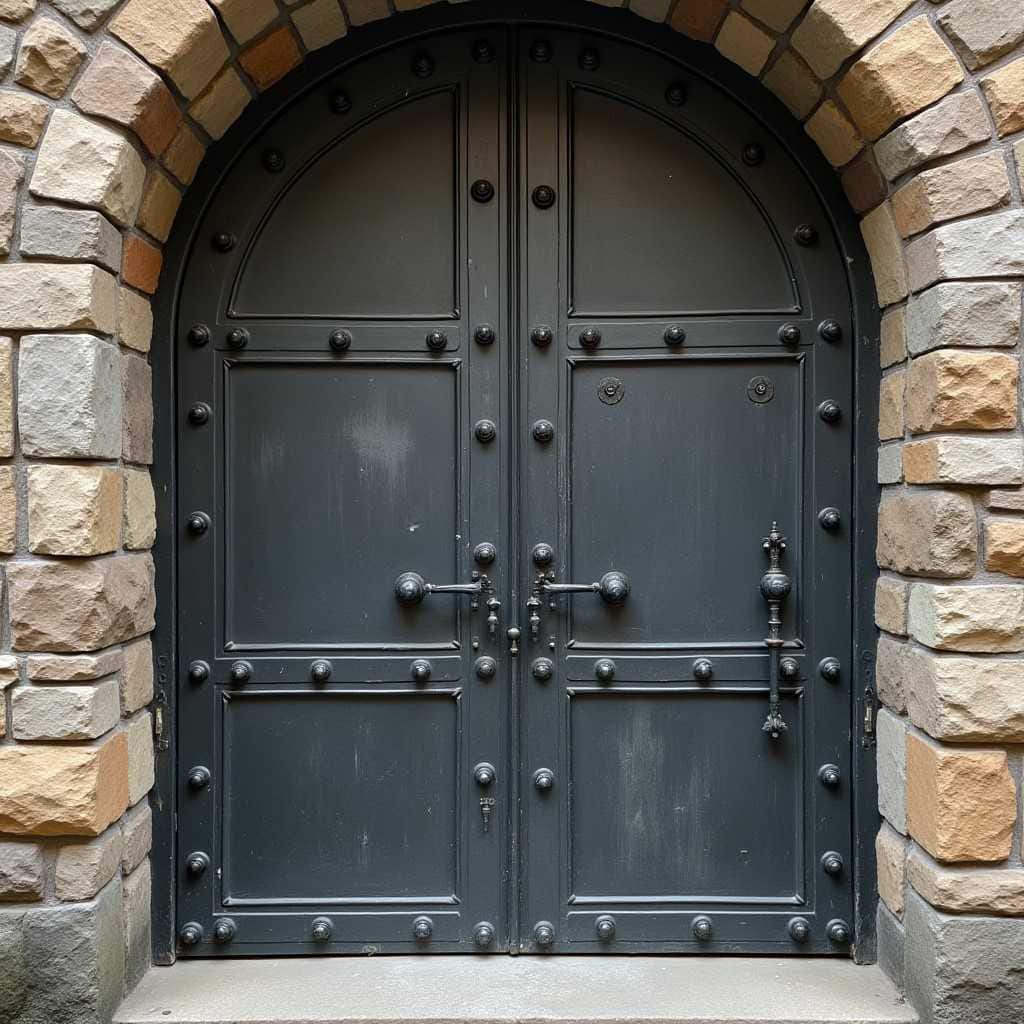
Hollow metal doors are made from steel sheets of metal, that are bent and shaped into various profiles. When metal sheets are produced, they go through a process called cold-rolling, which involves compressing the metal at room temperature to achieve a desired thickness. This thickness is measured in “gauge.” In the gauge system, a lower number indicates a thicker sheet of metal. For example, a 10-gauge steel sheet is thicker than a 20-gauge steel sheet. This system helps standardize the thickness of metal sheets for various applications. Hollow Metal Doors consist of different door types like:
- Stainless Steel Doors
- Louvered Doors
- Bulletproof Doors
Security Doors: Enhanced Protection for Peace of Mind

Security doors resemble hollow metal doors but offer significantly enhanced protection against forced entry, ram-raiding, and lock picking. They incorporate features like reinforced frames and cores to withstand impacts, and some even include additional layers of metal or other materials for increased resistance. High-security locking mechanisms, such as multi-point systems, deadbolts, and electronic access controls, are standard features. Integration with security systems for remote monitoring and control is also often available.
Aluminum Doors: Strength, Style, and Corrosion Resistance

Aluminum doors offer a compelling combination of strength and light weight. While strong, they are generally lighter than hollow metal doors. Their inherent resistance to corrosion and rust makes them a particularly good choice for storefronts. Aluminum doors add security and style to any commercial building.
Glass Storefront Doors: Beautiful, But Think About Security

Glass storefront doors look amazing. They’re often made with tougher glass (tempered or laminated), but that might not be enough if your business isn’t open all the time. Even toughened glass is still glass, so you’ll probably want extra security to keep things safe. But, if you’ve got that covered, they’re some of the most beautiful doors out there.
Glass Doors: Stylish Interior Dividers
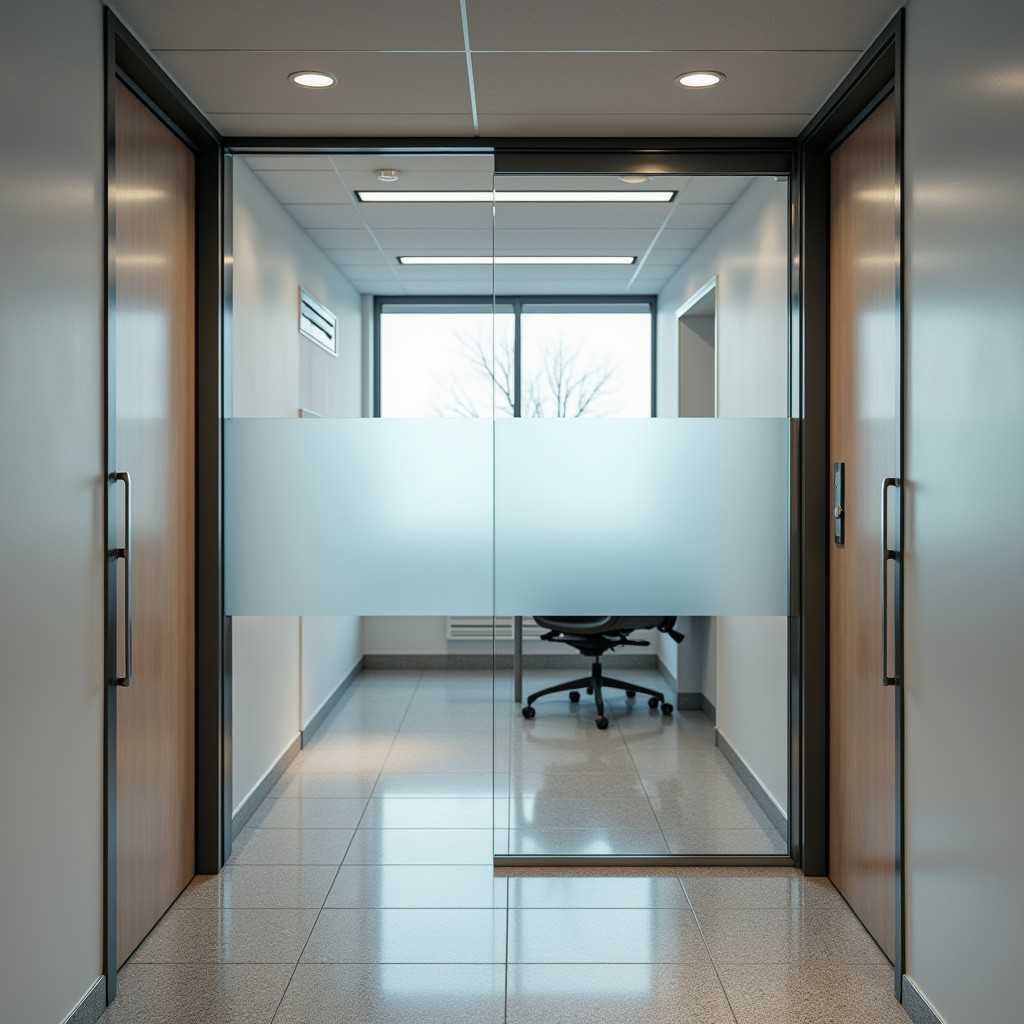
Yes, these are also made of glass, but they’re not for storefronts. Glass doors are a different type of interior door, used inside offices or commercial buildings to divide rooms or spaces. They offer a variety of styles: frosted for privacy, clear glass for light, or framed or frameless options. They adapt easily to different designs and needs.
Acoustic Doors: Sound Control for a Quieter Environment
Acoustic doors specialize in minimizing noise transfer, making them an ideal choice for studios, offices, or any commercial setting where a quiet environment is essential.
Revolving Doors: Energy Efficiency and Controlled Access

Revolving doors, with their rotating three- or four-panel design, allow people to enter and exit a building simultaneously while minimizing drafts and air exchange. This helps maintain a stable indoor temperature, improving energy efficiency. Revolving doors are also effective for managing foot traffic in high-volume areas like office buildings and hotels.
Roll-up doors: Durability and security

Roll-up doors are doors made of horizontal slats or panels that roll up into a coil above the opening when opened. They are commonly used in garages, warehouses, and storage facilities. The design saves space because the door rolls up rather than swinging out, making them ideal for areas with limited space. Roll-up doors are known for their durability and security, often made from materials like steel or aluminum to withstand heavy use and protect against unauthorized entry.
some Q&A about doors
here are some common door questions answered by experts
How wide is a door?
The width of a door varies depending on its type and intended use. Interior doors are different from exterior doors, and residential doors are different from commercial doors. It’s hard to give a definitive answer, but here’s an estimated range for common door widths:
- Inside Doors (Homes): Usually 28-36 inches, often 30 or 32 inches.
- Outside Doors (Homes): Usually 36 inches.
- Commercial Doors: Often 36 inches or wider.
- Double Doors: Each door is usually 30-36 inches.
- Closet Doors: Can be narrower, like 24-30 inches.
- Sliding/Pocket Doors: Similar to inside doors, 28-36 inches.
How tall is a door?
The same as width door heights vary, but here’s a look at standard doors common sizes:
- Home – Inside Doors: Usually 80 inches (6’8″).
- Home – Outside Doors: Usually 80 inches (6’8″), sometimes taller (84″ or 96″).
- Commercial Doors: Often 84 inches (7 feet).
- Special Doors: Heights vary depending on the need.
What Are Doors Made Of?
Doors are made from various materials, each with its own pros and cons. Some are strong and secure but heavy, while others are lightweight but might not offer as much protection. Common door materials include:
- Wood
- MDF
- Metal
- Fiberglass
- Glass
There’s More to Explore in The World Of Doors
We hope this guide to the world of doors has been helpful in your search for the perfect door. We’re passionate about sharing our years of experience and knowledge to help you make informed decisions. Be sure to check out our blog for more helpful articles and tips! Thank you for
Citations
some articles we used in writing that blog:
Secured by Design. Police Crime Prevention Initiative. Retrieved 29 October 2019.